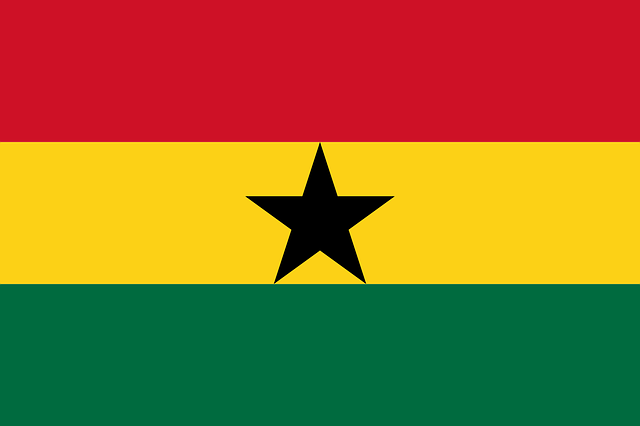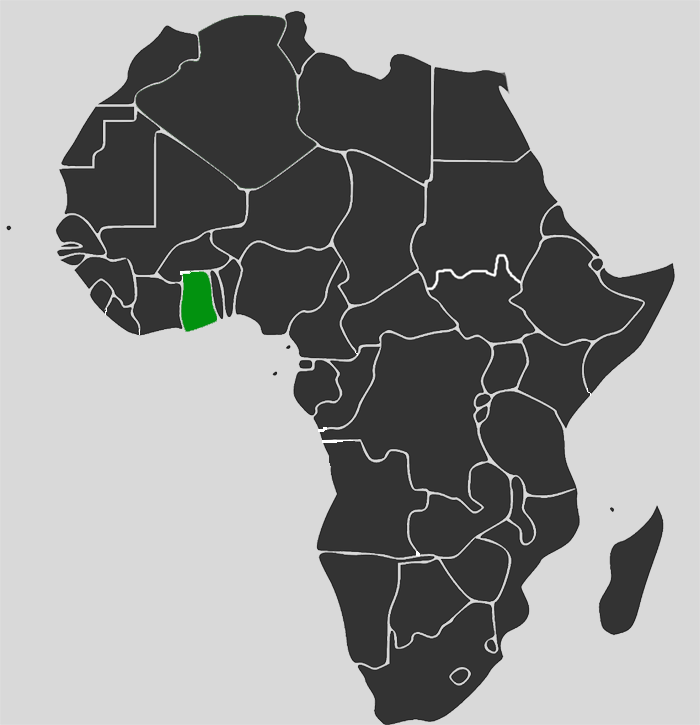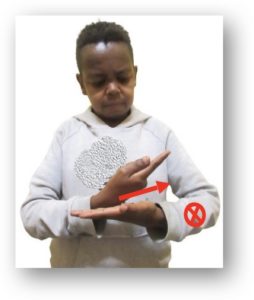Republic of Ghana
Total Population
30,418,000 (2019 Ethnologue)
Deaf Population
6,000
Number of Sign Language Users
Nation's Official Language
Akan, English
Other Languages
The number of established languages listed in Ethnologue is 83. Some of these are:
- Adele
- Ahanta
- Anufo
- Awutu
- Bimoba
- Birifor, Southern
- Buli
- Cherepon
- Chumburung
- Dagbani
- Deg
- Esahie
- Éwé
- Farefare
- Gikyode
- Gua
- Hausa
- Igbo
- Kusaal
- Lelemi
- Mampruli
- Mòoré
- Nkonya
- Nzema
- Paasaal
- Selee
- Sisaala, Tumulung
- Vagla
- Wali
- Wasa
- Yoruba
Name of Sign Language
Ghanaian Sign Language, Adamorobe Sign Language, Nanabin Sign Language
Overview Of Deaf Community And Education
Deaf education in Ghana was initiated by Reverend Andrew Foster and his organization the Christian Mission of the Deaf. In 1957, the first deaf school was established in Accra. In fact, this was the first school initiated by this organization in Africa. This school soon opened a new branch in Mampong- Akuapim, Eastern Region. Shortly after their establishment the schools were transferred to the Ministry of Education. These schools henceforth served as model schools for deaf education in the country. Currently, Ghana has a relatively large number of deaf schools, offering both primary and secondary education. Academic training in Deaf Studies-related topics is offered at University of Education, Winneba, as part of the Special Education Program, and at the University of Ghana, Legon, where a sign language linguistics program is offered as part of the program in Linguistics.
In deaf schools, English and Ghanaian Sign Language are the languages of communication.
Sign Language Overview
Ghanaian Sign Language is used is widely used, including in deaf education. Two village sign languages have been described, Adamorobe Sign Language and Nanabin Sign Language.
Ghanaian Sign Language is little researched. It is clear that there are strong resemblances with American Sign Language. There is also a discernible influence of Signed English. The influence of American Sign Language is on-going and not limited to the initial phase of deaf education in Ghana. Ghanaian Sign Language is a vibrant language.
The Linguistics Department of the University of Ghana has a one year programme in sign language as an elective for students in the Department. The University of Education (Winneba) teaches sign language as a subject for students within special needs education. Other private tertiary institutions in Ghana have started teaching Ghanaian Sign Language as a course to people who are interested in acquiring knowledge on how to sign.
GNAD published a non-dated paper dictionary. Video and text materials were produced for the Ghanaian Sign Language courses at the University of Ghana. An extensive dictionary with an estimated 1800 is currently being created by the American Peace Corps. This dictionary does not seem to document the variation that is reported to exist in Ghanaian Sign Language.
Adamorobe Sign Language (AdaSL) and Nanabin Sign Language are used in the villages of Adamorobe and Nanabin respectively. These are sign languages that evolved in response to a heightened incidence of hereditary deafness in the community. With an estimated age of over 200 years, AdaSL seems to be one of the oldest living sign languages that evolved in this way. AdaSL is relatively well researched from both a linguistic and an anthropological perspective.
A large, annotated video corpus of the language was compiled as part of a documentation project on endangered West African sign languages. What is clear that AdaSL has evolved spontaneously, independent of Ghanaian Sign Language. Today, most deaf signers are bilingual to some degree in Ghanaian Sign Language due to regular contact with this language. Thus, the deaf children of the village go to the boarding school in Mampong where Ghanaian SL is the medium of instruction, the weekly church service is in Ghanaian Sign Language, and contacts with deaf people from outside Adamorobe are in Ghanaian Sign Language too.
Nanabin Sign Language is used in a family with three generations of deafness in the village of Nanabin. About two hours of spontaneous signing has been documented and is part of the corpus of Adamorobe Sign Language.
Deaf Organizations In Country
- Ghana National Association of the Deaf (GNAD) (founded in 1968)
Overview of Interpreting Services
Qualified sign language interpreters are available for Ghanaian Sign Language. These interpreters work at the Ghanaian National Association of the Deaf, inclusive educational institutions, universities, hospitals, churches, the national television etcetera. The main news on the national television, as well as other government programs like “meet the presses” and some special government interviews are interpreted in GSL. Ghana has a national interpreters association; the Ghana Association of Sign Language Interpreters (GHASLI).
For Adamorobe Sign Language, a small number of deaf and hearing people occasionally volunteer to interpret. The weekly church services are held in Ghanaian Sign Language. Previously, these services were interpreted by the late Kofi Adin, an excellent deaf signer, bilingual in Adamorobe Sign Language and Ghanaian Sign Language. For many decades, Adamorobe also had a designated hearing interpreter in the late Agnes Bomo, born to a family with several deaf members.
Resources
Edward, M. (2015). We speak with our hands and voices: Iconicity in Adamorobe Sign Language and AkuapemTwi (ideophones). Mphil thesis, University of Bergen, Norway.
Friedner, M., & Kusters, A. (2014). On the possibilities and limits of" DEAF DEAF SAME": Tourism and empowerment camps in Adamorobe (Ghana), Bangalore and Mumbai (India). Disability Studies Quarterly, 34(3).
Ghana National Association of the Deaf. n.d. [ca. 2001]. Ghanaian Sign Language. Ghana: Ghana National Association of the Deaf.
Kusters, A. M. J. (2011). " Since time immemorial until the end of days": an ethnographic study of the production of deaf space in Adamorobe, Ghana (Doctoral dissertation, University of Bristol).
Kusters, A. (2012). “The Gong Gong Was Beaten”—Adamorobe: A “Deaf Village” in Ghana and Its Marriage Prohibition for Deaf Partners. Sustainability, 4(10), 2765-2784.
Kusters, A. (2012). Being a deaf white anthropologist in Adamorobe: Some ethical and methodological issues. Sign languages in village communities: Anthropological and linguistic insights, 27-52.
Kusters, A. (2012). Adamorobe: A demographic, sociolinguistic and sociocultural profile. Sign languages in village communities: Anthropological and linguistic insights, 347-352.
Kusters, A. (2014). Language ideologies in the shared signing community of Adamorobe. Language in Society, 43(2), 139-158.
Kusters, A. (2014). Deaf Sociality and the Deaf Lutheran Church in Adamorobe, Ghana. Sign Language Studies, 14(4), 466-487.
Kusters, A. (2015). Deaf space in Adamorobe: An ethnographic study of a village in Ghana. Gallaudet University Press.
Nyst, V. (2007b) A descriptive analysis of Adamorobe Sign Language (Ghana). Utrecht: LOT.
Nyst, V. (2007a) Simultaneous constructions in Adamorobe Sign Language (Ghana). In: Vermeerbergen, Myriam, Lorraine Leeson & Onno Crasborn (eds.) Simultaneity in Signed Languages. Amsterdam, Philadelphia: Benjamins. 127-145
Nyst, V. (2009) Pointing out Possession in Adamorobe Sign Language (Ghana). In: Zeshan, Ulrike & Perniss, Pamela (ed.) Possessive constructions in Sign Languages. Sign Language Typology Series No.2. Nijmegen: Ishara Press.
Nyst, V. (2010) Sign languages in West Africa. Brentari, D. (ed.) Sign Languages - A Cambridge language survey In: Cambridge: Cambridge University Press. 405 – 432.
Nyst V.A.S. (2012), A Reference Corpus of Adamorobe Sign Language. A digital, annotated video corpus of the sign language used in the village of Adamorobe, Ghana.
Okyere, A. D., & Addo, M. J. (1999). Historical development of education of the deaf in Ghana. In H. W. Brelje (Ed.), Global perspectives on the education of the deaf in selected countries (pp. 141–155). Hillsboro, OR: Butte Publications.
Runnels, J. (2017). Dr. Andrew Foster: A literature review. American Annals of the Deaf, 162(3), 243–252.
https://ourtalkinghands.com/wp-content/uploads/GSL-Dictionary-Second-Edition-Sample.pdf
https://www.graphic.com.gh/news/general-news/deaf-association-develops-directory-for-sign-language-interpreters.html
List of Contributors
Mary Edwards, Francis Boison, Victoria Nyst



